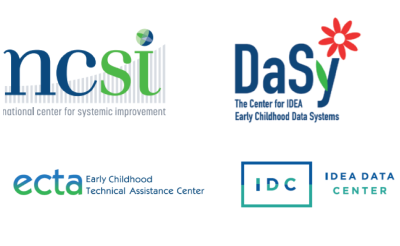Site Search
Results 8 - 14 of 35
Format: Applications and Spreadsheets
LEA EDFacts Edit Check and Data Display ToolsThe LEA EDFacts Edit Check and Data Display Tools allow states to identify potential business rule errors or errors in category sets, subtotals, or totals prior to submitting the data to OSEP via the EDFacts Submission System. The tool also provides states with user-friendly data summaries.
Format: Guides and Briefs
State Determinations of Local Education Agency (LEA) PerformanceThis resource provides a summary of findings from 28 states’ publicly available LEA determinations processes. States can use this resource to learn more about the data elements, calculation methodologies, and determination category criteria these 28 states used for making LEA determinations. This information can be particularly valuable for those states considering revisions and updates to their own LEA determinations processes.
Format: Toolkits
Success Gaps Toolkit: Addressing Equity, Inclusion, and OpportunityThe Success Gaps Toolkit presents a process for using data and the Success Gap Rubric to identify root causes of gaps between groups of children in districts or schools. These success gaps occur when the education system is not meeting the needs of all groups of children and outcomes for some groups are different than outcomes for most groups. The toolkit, with its process and materials, provides a manageable and defined way for districts or schools to identify success gaps that are present and their root causes and then make a plan for addressing the gaps. The success gaps may be the graduation rate of students who are English learners compared to the rate of all other children, the out-of-school suspension rate of children who are Black compared to the rate of all other children, the identification of children who are Hispanic as children with specific learning disabilities compared to the identification of all other children, and other gaps.
Format: Guides and Briefs
Success Gaps Rubric: Addressing Equity, Inclusion, and OpportunityThis rubric allows a team of users from a district or school to systematically examine the root causes of success gaps among groups of students by focusing on equity, inclusion, and opportunity. The recently updated rubric now includes considerations for children as young as preschool age. A complementary white paper provided the research-based background that supported development of the rubric.
Format: Guides and Briefs
A State Guide on Identifying, Correcting, and Reporting Noncompliance with IDEA RequirementsThe Individuals with Disabilities Education Act (IDEA) requires states to monitor and enforce IDEA Part C and Part B requirements, with a primary focus on those requirements that are most closely related to improving results and functional outcomes for infants, toddlers, and children with disabilities. To support states to carry out these monitoring responsibilities, A State Guide on Identifying, Correcting, and Reporting Noncompliance with IDEA Requirements describes the IDEA requirements related to identifying noncompliance, making findings of noncompliance, correcting and verifying correction of noncompliance, and federal reporting on compliance and correction of noncompliance in the state’s SPP/APR. This guide is based on the Office of Special Education Programs (OSEP) Memo 09-02: Reporting on Correction of Noncompliance in the Annual Performance Report Required under Sections 616 and 642 of the Individuals with Disabilities Education Act and the OSEP Frequently Asked Questions on Identifying and Correcting Noncompliance and Reporting on Correction in the SPP/APR.
This companion resource to A State Guide on Identifying, Correcting, and Reporting Noncompliance with IDEA Requirements summarizes the responsibilities of local early intervention programs or Local Education Agency, state Lead Agency or State Educational Agency and data that needs to be reported to OSEP on compliance, correction of noncompliance and verification of correction for SPP/APR indicators.
Format: Guides and Briefs
Graduation Rate and Dropout Rate: Indicators 1 and 2 Measurement Changes From FFY 2019 to FFY 2020–2025This resource focuses on recent changes in the data source and measurement of Part B Indicators 1 and 2. The resource specifically addresses the treatment of “alternate diploma” in the new calculation. In FFY 2019, the calculation of graduation rate included students receiving an alternate diploma in the numerator. For FFY 2020–2025 the calculation of graduation rate includes students receiving an alternate diploma in the denominator. The calculation for Indicator 2 remains similar from FFY 2019 to FFY 2020–2025; however, it explicitly adds students receiving an alternate diploma in the denominator.
Format: Applications and Spreadsheets
Graduation Rate (Indicator 1) and Dropout Rate (Indicator 2) CalculatorThis tool from IDC and NTACT calculates graduation and dropout rates using the 618 Exiting data, as OSEP will require in coming years for reporting in states’ SPP/APRs. The tool can accumulate and graph multiple years of data, allowing users to observe trends in the rates over time and share the information easily with stakeholders.







